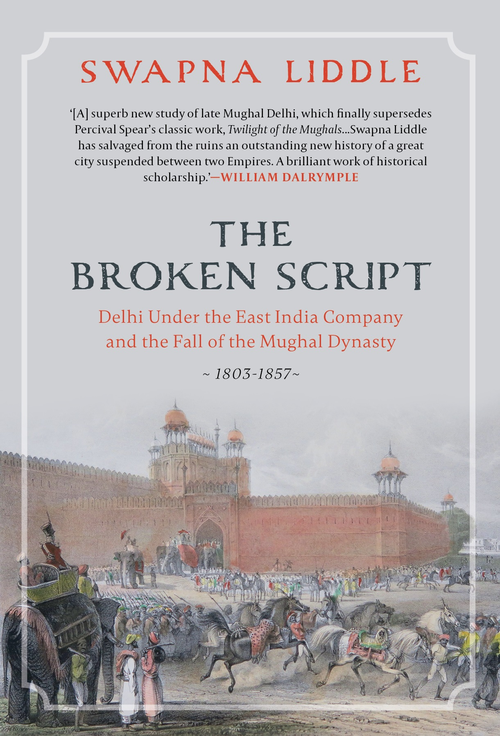In the words of Dalrymple, Liddle has “salvaged from the ruins an outstanding new history of a great city suspended between two Empires. A brilliant work of historical scholarship.”…reports Sourish Bhattacharyya
The chronicler of Delhi, Swapna Liddle, has come out with a new book that, in the words of William Dalrymple, “finally supersedes Percival Spear’s classic, ‘Twilight of the Mughals’.”
Taking a majestic sweep through the years 1803, when the army of the East India Company General, Viscount Gerard Lake, defeated the forces of Daulatrao Scindia led by a French mercenary at the Battle of Patparganj and entered Delhi, to 1857, when the last Mughal emperor involuntarily set off the events of the Revolt, ‘The Broken Script’ explores the forgotten facets of the intervening five decades — or the “hybrid half-century”, as Liddle describes them.
In the words of Dalrymple, Liddle has “salvaged from the ruins an outstanding new history of a great city suspended between two Empires. A brilliant work of historical scholarship.”
Liddle is known for her books ‘Chandni Chowk: The Mughal City of Old Delhi’ and ‘Connaught Place and the Making of New Delhi’, apart from her edited and annotated translation of ‘Sair-ul-Manazil’, the first known listing of Delhi’s historical monuments compiled in the 1820s by Mirza Sangin Bayg.
At the start of the 19th century, there was a Mughal emperor on the throne in Delhi, but the Mughal empire, in decline for almost a century, was practically gone, says the book’s promo. A new power had emerged — the East India Company, which captured the Mughal capital in September 1803, becoming its de facto ruler.
As two regimes overlapped, Delhi found itself at the cusp of modernity, changing in profound ways that are scarcely recognised today.
‘The Broken Script’, published by Speaking Tiger, describes in vivid detail the complex tussle between the last two Mughal emperors and the East India Company, one still wielding considerable symbolic authority, the other a fast-growing military and political power.
In this maelstrom of political uncertainty, Delhi saw some of its best moments, exemplified by characters such as the poet Ghalib and the self-taught mathematician Ram Chander, and of course the cultural and intellectual elite, business magnates, the old landed nobility and the exotic new ruling class — the British.
Through their prism, Liddle looks at the economic, social and cultural climate that evolved over six decades.
She examines the great flowering of poetry in Urdu, even as attempts to use the language for scientific education faltered; the fascinating history of the Delhi College, where both Ghalib and Ram Chander taught, and how it represented a radically new model for higher education in India; the rise of modern journalism in Urdu, and various printing presses and publications, represented by papers like the ‘Dehli Urdu Akhbar’; and the founding of institutions such as the Archeological Society.
All of these developments point to a fast-modernising society that was being shaped to a significant extent by Western ideas and institutions, but was also rooted strongly in indigenous systems of thought and learning.
The Revolt of 1857 and its aftermath violently disrupted this distinctive modernity, according to Liddle. Her book draws upon a variety of records — including Urdu poetry written after the revolt was brutally suppressed, proceedings of the trials conducted by the British, private letters and newspaper reports — for a nuanced examination of the events of 1857, challenging many commonly held and often simplistic assumptions.
In the process, ‘The Broken Script’ details not only the destruction wreaked upon Delhi, but also strategies for survival and early attempts to rebuild and revive individual lives and institutions.
ALSO READ-
